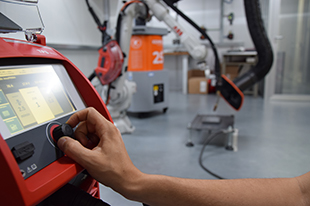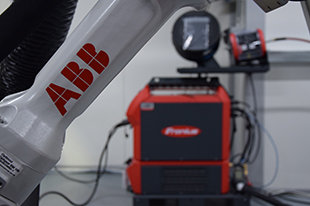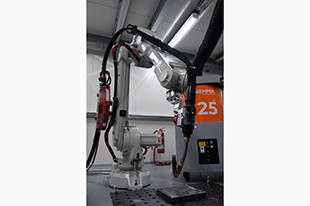
The RocWAAM-Robotic Wire Arc Additive Manufacturing project kicked-off at the Department of Mechanical Engineering of the Politecnico di Milano. The aim of the project is to develop the WAAM system, the deposition process, and sharing the know-between the partners. The implemented WAAM system will make use of the new Cold Metal Transfer - CMT arc welding technology. Integrated to a six-axis robotic manipulator, the metal additive manufacturing of large components with great geometric freedom will be possible through an advanced degree of automation.The RocWAAM project will develop the WAAM process for applications in the fields of die-making, civil construction, and energy, while comparing this new technology with other families of additive manufacturing processes as well as the conventional manufacturing processes that it replaces.
The research on the subject will be built by giving particular emphasis to the topic of sustainability which represents one of the main forces towards the industrialization of the process. The team brings together the main leaders in hardware development, ABB and Fronius that have an established ten-year collaboration in the field. The two companies integrated the WAAM cell in our laboratories. The BLM Group will provide the comparison with the alternative laser metal deposition (LMD) and laser metal wire deposition (LMWD) technologies. The 3 end-users in the team will provide the application cases to explore different materials and geometries. Fontana Group for the automotive die-making, Edilanzutti for the civil construction, and Baker Hughes for the energy sector will provide distinct case studies to allow testing the process on different scenarios.
WAAM technology uses the same operating principle as arc welding, in which an electric arc is used as a source of heat to achieve the melting of the metal that is supplied in the form of wire. Different possible configurations can be recognized depending on how the electric arc is triggered. In the case of the MIG / MAG configuration, used in our laboratory, the electric arc is ignited between the wire, which is coaxially fed by the welding torch, and the component. The partnership with Fronius and Arroweld offers the opportunity to use their proprietary CMT method. Using CMT it is possible to generate an oscillation of the electric current thanks to the retraction of the wire. In fact, in this configuration, the wire (positive pole) is pushed out until the contact with the piece (negative pole) generates a short circuit, at this point the wire is retracted. As the wire moves away from the piece, the value of the voltage and consequently of the electric current are varied. This strategy allows you to have a more precise control over the heat input and to manage drop detachment in a more controlled manner. By transferring these advantages to additive manufacturing, where the control of thermal accumulation becomes particularly relevant not only for the aesthetics but also for the functionality of the component.
With the introduction of WAAM technology in our laboratories, the additive manufacturing research capabilities of @DMEC are further enriched.




